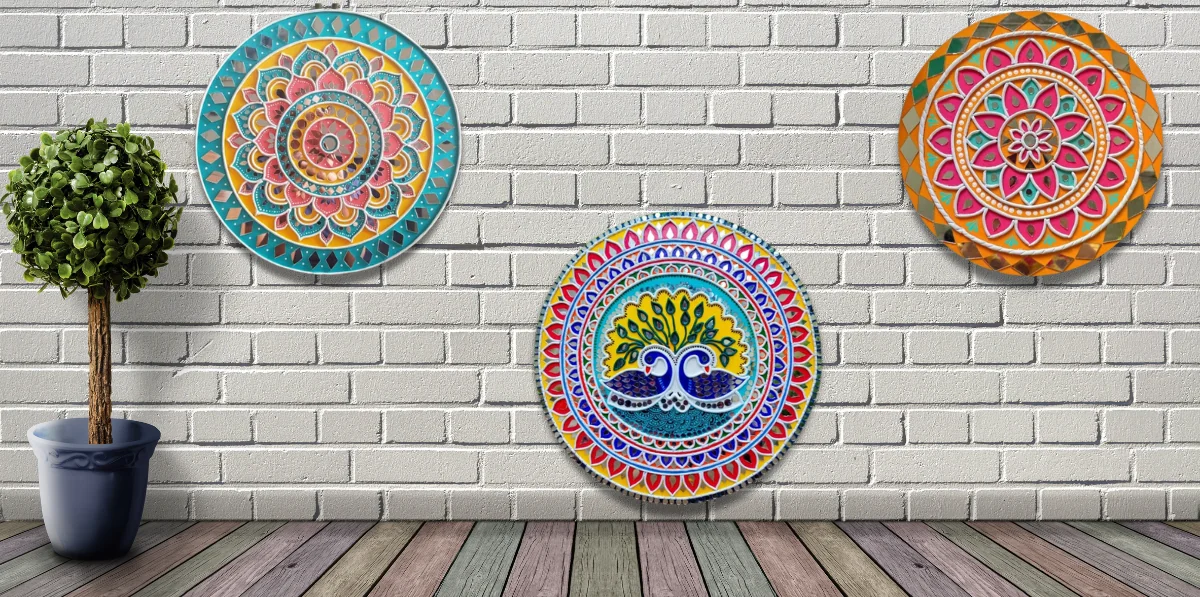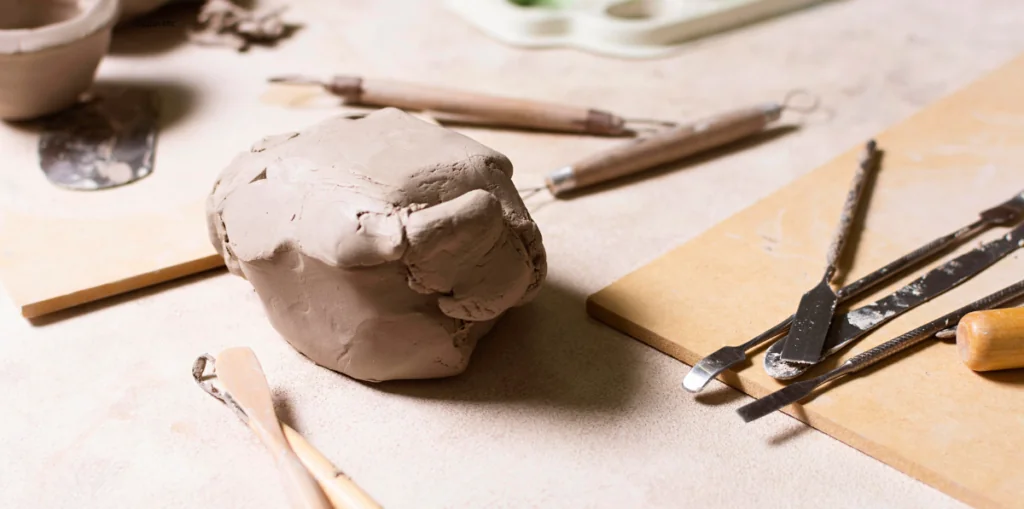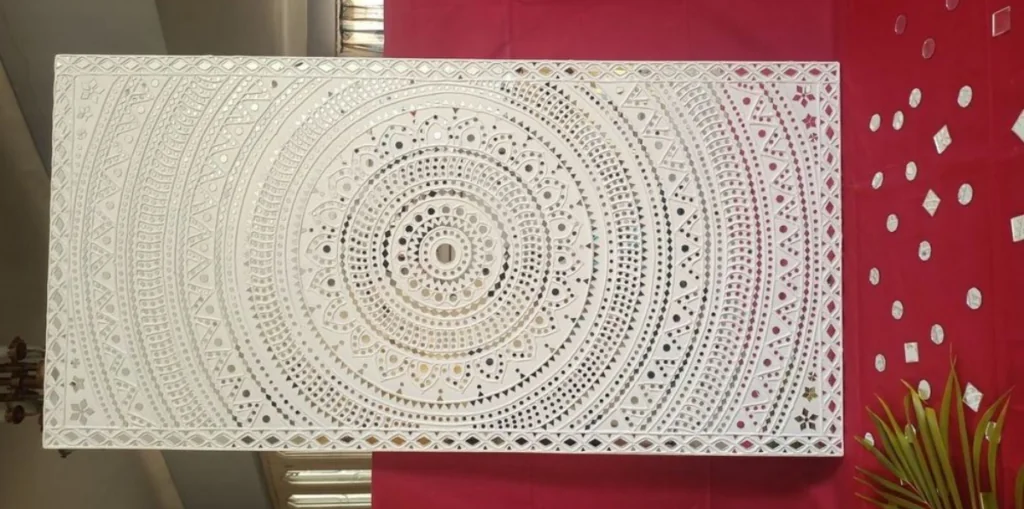
Blog
Lippan Art: Embracing Tradition, Showcasing Craftsmanship, and Exuding Excellence

Introduction
Lippan art, also known as clay and mirror work, is a traditional art form native to the Kutch region of Gujarat, India. This unique work of art reflects the rich cultural heritage and artistic creativity of the people of Kutch with its distinctive designs and mirror work. In this blog we will learn about the origins, ideas, importance and modern relevance of Lippan art, discover how it continues to fascinate art lovers and preserve the legacy of its creators.
Origins and Historical Significance
Lipan art has its roots in the arid regions of Kutch, where local communities, primarily the Rabari, Mutwa and Meghwal tribes, have practiced this craft for centuries. The word “Lippan” itself means “clay” or “soil” in the local Kutch language and indicates the main material used in this painting.
Historically, Lipan art was used to decorate the interior and exterior walls of rural houses. Ornate murals not only looked beautiful but also acted as an insulator helping in keeping the interior cool in the hot summer months and warm in the cold winter months. The use of glass, called ‘abhla’ in Gujarati, added a sparkling touch, reflecting light and creating a beautiful visual experience.
Techniques and Materials
Creating Lippan painting is a meticulous process that requires skill, patience and creativity. The main materials used are clay or soil, compost and mirrors. Traditionally clay is mixed with compost to create a good, solid surface. This mixture is then painted on the wall in various designs and patterns.
Step-by-Step Process:
- Preparation of the Base: The walls are first prepared by applying a base layer of clay mixed with manure. This layer dries and hardens, providing a solid foundation for later designs.
- Designing the Pattern: Artists sketch the desired patterns on the prepared surface. These patterns often include nature-inspired patterns such as flowers, peacocks and trees, as well as geometric and abstract forms.
- Application of Clay Mixture: The artist uses their hands or simple tools to apply the clay onto the drawing to create the design. The clay is precisely molded and shaped to create texture and three-dimensional effects.
- Embedding Mirrors: Once the clay is set, small mirrors are placed in the wet clay. The mirrors are carefully positioned to enhance the overall design and add a sparkling touch.
- Drying and Finishing: The finished mural is left to dry. As it dries, the clay hardens, holding the mirror in place. Some artists may use white clay or lime to give the painting a polished appearance.

Symbolism and Cultural Significance
Lippan art is more than just decorative objects; It has deep cultural significance and meaning for the communities that practice it. The designs and patterns used in Lipan art often have unique themes that reflect the beliefs, traditions and lifestyles of the people of Kutch.
Common Motifs and Their Meanings:
- Peacock: Symbolizes beauty, grace, and prosperity.
- Tree of Life: Represents growth, strength, and connection to nature.
- Fish: Often associated with fertility and abundance.
- Sun and Moon: Signify the passage of time and the balance of opposites.
Not only are these creations beautiful but they also work as narratives that tell stories about community history, legends, and spiritual beliefs. It is believed that the use of mirrors, in particular, drives away evil spirits and brings good luck and good energy to the house.
Contemporary Relevance and Revival
In recent years, Lippan art has gained recognition beyond Kutch and has found admirers around the country and outside. The special appeal of traditional craft lies in their rustic appearance, beautiful designs and the effect of light and shadow created by mirrors. As interest in indigenous texts and fine arts continues, Lippan art finds new ways of expression and evolution.
Modern Applications:
- Home Décor: Lippan art has transcended its traditional boundaries and is now used in the decoration of modern buildings. From wall panels and partitions to furniture and accessories, Lipan Art’s intricate designs add elegance and rustic charm to modern interiors.
- Fashion and Accessories: Designers create Lippan-inspired designs in clothing, jewellery and accessories to create unique content and rich culture.
- Workshops and Exhibitions: Craftsmen in Kutch now organize workshops and participate in exhibitions to share their craft with wider audiences and to ensure the survival and continuation of this art form.

Preserving a Cultural Legacy
Although Lippan art is growing in popularity, it still faces challenges from modernization and changing lifestyles. The younger generation, influenced by urbanisation, may not be interested in learning and pursuing these labour-intensive activities. However, the efforts of cultural organizations, NGOs and individual artists have played an important role in preserving and promoting Lippan art.
Initiatives for Preservation:
- Skill Development Programs: Training workshops and skill development programs are organized to teach and develop student skills and to ensure the transfer of knowledge and skills from generation to generation.
- Market Access and Fair Trade: Giving artisans access to a wider market and ensuring fair trade helps support their livelihoods and encourages them to pursue their craft.
- Cultural Tourism: Promoting Kutch as a cultural tourism destination not only boosts the local economy but also increases awareness and appreciation of Lipan art among tourists.
Conclusion
Lippan art is a testament to the creativity, talent and culture of the people of Kutch. Born in the desert landscape of Gujarat, this complex and fascinating art continues to inspire and fascinate with its timeless beauty. By encouraging and supporting this art form, we contribute to the preservation of precious heritage, ensuring that the stories, culture and performances of the past continue to support our lives now and into the future.
Whether it is home décor, unique fashion items or cultural treasures, Lippan Art immerses us in the spirit of Kutch and invites us to enjoy and appreciate the art and craft that define this extraordinary tradition.
Check out more amazing blogs like this on Souls of India

